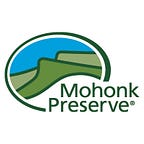Research Report #30 — Bedstraw in Ulster County
For many years scientists and naturalists have been studying and observing the flora and fauna of the Shawangunk Ridge. Foremost among them was Daniel Smiley, for whom Mohonk Preserve’s Daniel Smiley Research Center is named. Dan wrote numerous reports summarizing his observations on various topics. This regularly occurring series will feature some of these reports; some hold tremendous scientific value today and just await an interested researcher to follow up, others showcase a quirky sense of humor or highlight an oddity of nature.
Read the report: Bedstraw in Ulster County. July 1986. Paul C. Huth and Daniel Smiley.
A Note from Paul C. Huth, Director of Research Emeritus: As part of our work on the flora of the Northern Shawangunks, Daniel Smiley and I looked for significant species in the landscape that had first appeared and had changed their status on the ridge in Dan’s lifetime. Investigating Dan’s detailed records of these species and seeing them on the land allowed us to understand the timing of their arrival, the process of establishment, and their decades long spread in a changing ecosystem. One species that allowed us this window in time is the White Bedstraw, or Wild Madder, Galium album (synonym G. mollugo, ssp. erectum).
White Bedstraw is a member of the Rubiaceae, or Madder Family, which contains eight genera. The genus Galium locally contains at least 13 species, of some 27 taxa recorded in New York State (New York Flora Atlas). The understanding of the nomenclature of White Bedstraw has changed since we wrote our 1986 Research Report, and this write up reflects this change. White Bedstraw is a non-native “immigrant” plant, as we called it then, and is a widespread member of the native flora of Eurasia. It is a perennial plant that spreads easily by its abundantly produced seed. It usually has about inch long leaves arranged in stem whorls of six to eight
When we looked back in our Research Center collection of records and references for the arrival of White Bedstraw in the Hudson Valley, we found it wasn’t listed by John Torrey in the “Flora of New York State” in 1843. We found the first record for it was from 1867 near New York City. It was considered as “naturalized in ‘roadsides and fields, New York and Pennsylvania,’” by 1889. In 1924, New York State Botanist Homer D. House “considered it ‘locally frequent as a weed in southern New York.’” Dan Smiley first documented it here in the Shawangunks on 27 May 1938, about “….1.5 miles south of Mohonk Lake in (an) old field.”
As with many aggressive non-native plant species, shortly after their arrival and establishment they usually spread and multiply very quickly in susceptible habitats, to a point of almost overwhelming existing plants, both native and other introductions. Dan remembered that when he was responsible for Mohonk Farms in the 1940s, “….farm workers complained of a species of bedstraw as a ‘weed’ in hayfields, that was increasing in abundance.” Of particular interest, was Dan’s recollection during that period of seeing the same bedstraw invading young woods that were located “….on former cultivated fields, as indicated by stone walls.” In 1954, Stanley J. Smith, Curator of Botany, New York State Museum, considered this bedstraw “….invading fields and woods all over the state.”
By the late 1970s and 1980s, White Bedstraw had become a major species in fields of the Mohonk Preserve, in some, becoming the dominant species. In pastures, like at Spring Farm, before the land became part of the Preserve, where horses were grazing, they were seen “…. avoiding the abundant bedstraw plants.” Vincent J. Schaefer noted in 1985 that bedstraw was “….becoming a major field weed problem in Schenectady County” where he lived. In 1986, Mohonk Preserve Executive Director Seward Weber observed first hand that because of this bedstraw in fields in Vermont, some fields were “….near abandonment.” In July, 1986, we collected bedstraw plants at Spring Farm, noting that “….bedstraw was heavily matted and reclining (1 m.) over grasses and little other vegetation. Where a (experimental) swath was mown across field through the aging bedstraw plants, new vigorous sprouts have regenerated with bloom.”
Dan and I were encouraged to note in 1986, that where Dan had observed White Bedstraw invading young forest in the 1940s on land that had been one timed farmed, “….no bedstraw plants were found.” This likely due to the shade created by the mature forest canopy and the lack of disturbance.
As an aside, Dan and I considered Mohonk Preserve management strategies for maintaining former Mohonk farm fields as open space, that essentially “….involves resisting natural processes,” of invading woody vegetation attempting to revert the fields back to forest and wildness. Since White Bedstraw is so dominant in some fields and ultimately discourages the diversity of species and the establishment of new species, including woody seedlings, maybe we should be more accepting of the “….aggressive behavior” and “aesthetic values” that White Bedstraw has in helping maintain our open space.
Read the report: Bedstraw in Ulster County. July 1986. Paul C. Huth and Daniel Smiley.
